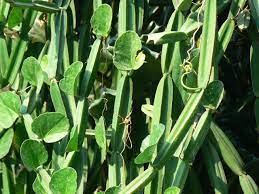TRIDAX (Tridax procumbens)
Introduction:
Nature has bestowed us
with a vast array of plant species, each harboring unique medicinal properties.
Tridax procumbens, commonly known as coat buttons or tridax daisy, is an
herbaceous perennial plant that often goes unnoticed in the realm of medicinal
herbs. However, this unassuming plant possesses a treasure trove of therapeutic
benefits that have been utilized for centuries in traditional medicine.
Traditional Medicinal
Uses:
Throughout history, it
has been revered for its diverse medicinal properties. Various traditional
healing systems, such as Ayurveda and traditional Chinese medicine, have employed
this herb to treat numerous ailments. Some of its traditional uses include:
- Anti-inflammatory and Analgesic Effects: It possesses
potent anti-inflammatory properties that can help alleviate pain and
reduce swelling associated with conditions like arthritis, rheumatism, and
gout. It has been used topically as a poultice or in the form of oil to
soothe joint and muscle pain.
- Wound Healing and Skin Disorders: The herb exhibits
remarkable wound healing properties, aiding in the recovery process by
promoting cell growth and tissue regeneration. Its antimicrobial activity
has been traditionally employed to treat cuts, bruises, burns, and skin
infections. Additionally, it is used to alleviate symptoms of skin
disorders like eczema, dermatitis, and acne.
- Antimicrobial and Antiparasitic Activity: The plant displays
broad-spectrum antimicrobial activity, inhibiting the growth of bacteria,
fungi, and viruses. It has been used traditionally to combat various
infections, including respiratory infections, urinary tract infections,
and gastrointestinal disorders caused by pathogens. It also exhibits
antiparasitic properties, making it useful against intestinal worms and
other parasitic infections.
- Digestive Disorders: In traditional medicine, it is
employed to relieve digestive ailments like indigestion, bloating, and
diarrhea. Its carminative properties help reduce flatulence and aid in
digestion. The herb's anti-diarrheal effects make it valuable in treating
gastrointestinal disorders.
Modern Scientific
Research:
Recent scientific
investigations have validated several traditional uses of Tridax procumbens,
shedding light on the underlying mechanisms and active constituents responsible
for its therapeutic potential. Key findings from modern research include:
- Anti-cancer Potential: Studies have shown that it
exhibits anti-cancer activity, inhibiting the growth of tumor cells in
various cancer types. The herb's bioactive compounds, such as flavonoids
and phenolic acids, contribute to its anti-cancer effects by inducing
apoptosis (cell death) and inhibiting cancer cell proliferation.
- Antioxidant and Immunomodulatory Effects: It possesses
potent antioxidant properties, protecting cells from oxidative damage
caused by free radicals. The herb also exhibits immunomodulatory effects,
enhancing the immune response and promoting overall well-being.
- Anti-diabetic Activity: Research indicates that it
possesses anti-diabetic properties, helping regulate blood glucose levels.
It may improve insulin sensitivity, increase glucose uptake by cells, and
inhibit enzymes involved in carbohydrate metabolism, making it potentially
valuable in managing diabetes.
- Cardiovascular Health: The herb has shown promise in
promoting cardiovascular health by reducing cholesterol levels, inhibiting
platelet aggregation, and improving blood circulation. These effects
contribute to the prevention and management of cardiovascular diseases.
Conclusion:
Tridax procumbens, an unassuming herb
with a long history of traditional use, possesses an impressive range of
medicinal properties. From its anti-inflammatory and analgesic effects to its
antimicrobial and anti-cancer potential, this herb has captured the attention
of modern scientific research. As we delve further into the therapeutic
potential of Tridax procumbens, it is crucial to conduct more studies to
validate its traditional uses and unlock its full medicinal prowess. With its
rich bioactive composition, this underrated herb may find a significant place
in modern healthcare as a natural remedy for various ailments, promoting a
holistic approach to well-being.
HAPPY BLOGGING!!!
DEEPIKA KRISHNAMOORTHY
A RESEARCH SCHOLAR




Comments
Post a Comment